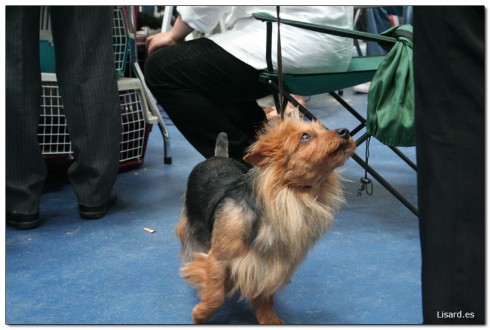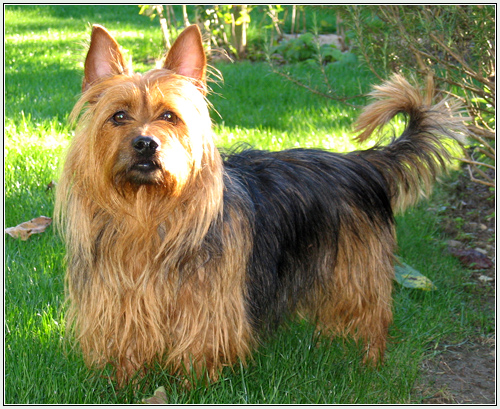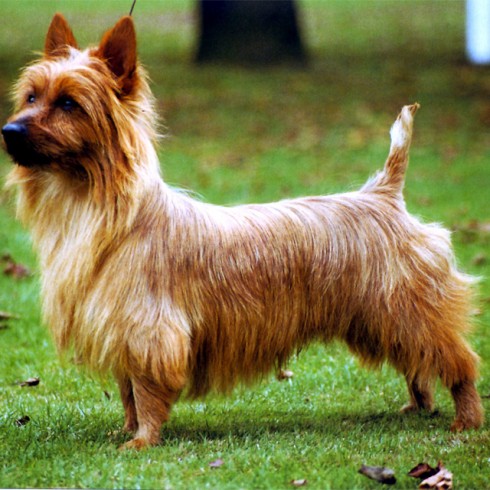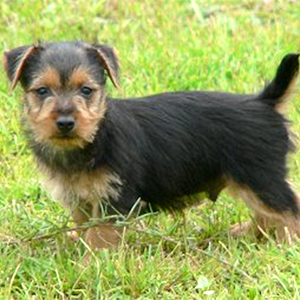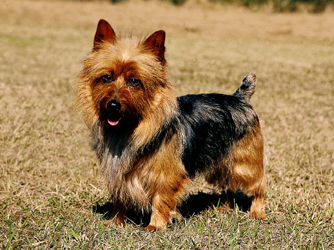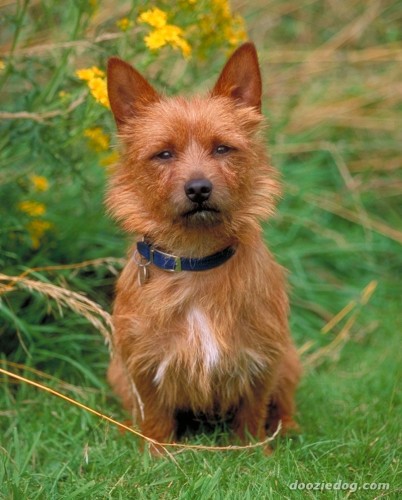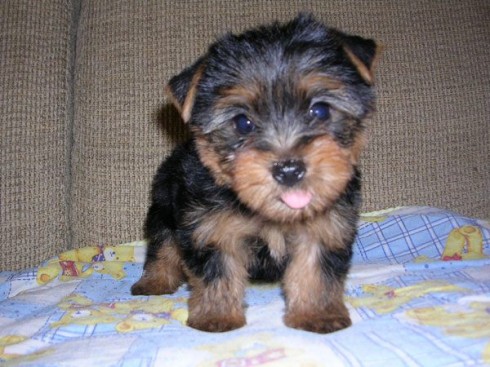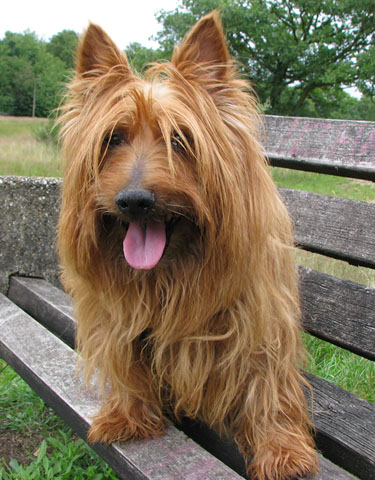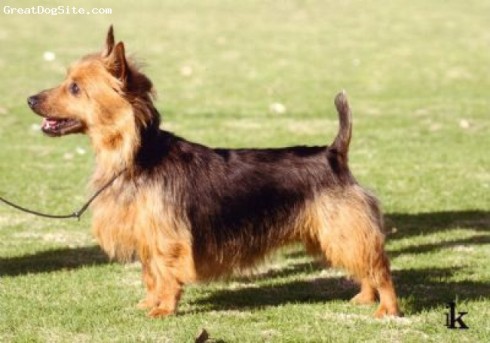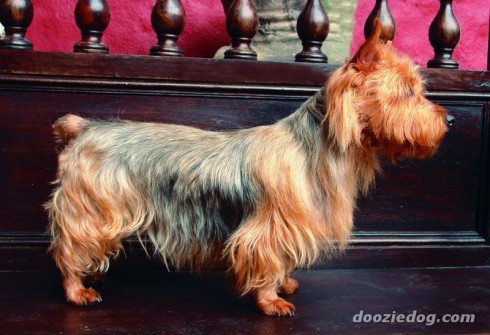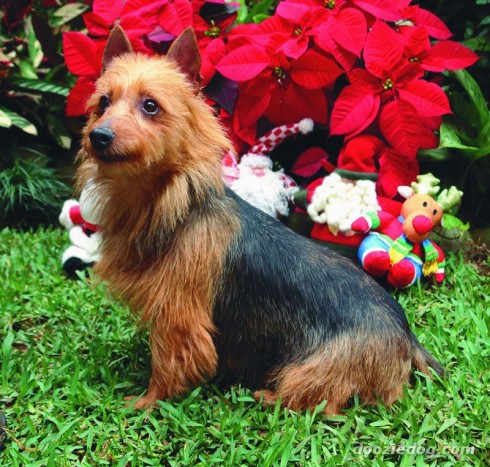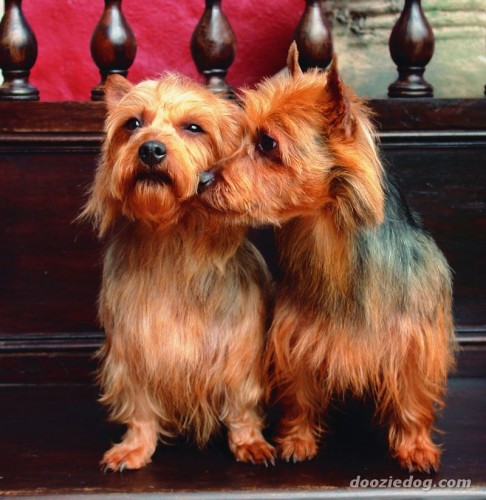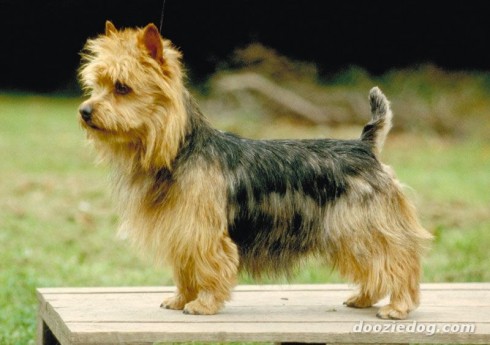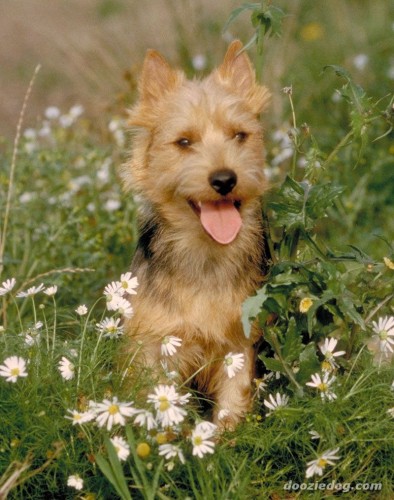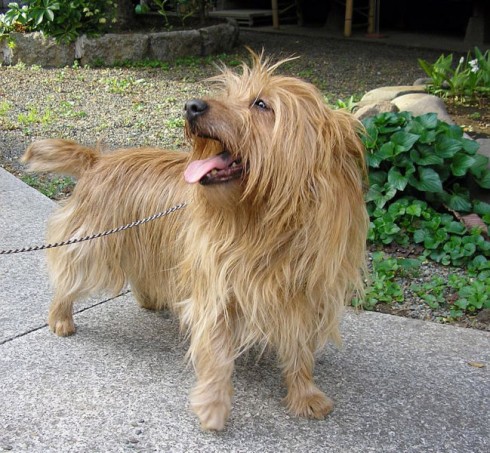Main Index
In Store
Our Web Store
Miniature Schnauzer Picture Gallery
Latest Dog Blogs
- What Are The Basic Commands To Train A Dog?
- PaySafe As The Most Popular Type Of Deposit
- Everything You Need To Know About Pet Sales
- Dogs Contribute To Our Physical And Mental Well Being
- How To Choose Where To Bet On Greyhounds In 2022
- Volunteer With Animals - How To Help Dogs Around The World
- Basic Understanding Of The House Edge
- Why You Should Get A Dog
- Top 20 Popular Dog Names Around The World
- Constipation in Dogs and How to Find Solutions
Australian Terrier
Australian Terrier Picture Gallery
Australian Terrier Clubs/Associations
The Full Australian Terrier Description
Though one of the smallest terriers, the rugged Australian Terrier was developed in the harsh conditions of the Australian Outback, where he worked side by side with the pioneers -- controlling rats and snakes, alerting humans to intruders, even tending sheep. He's ready for any situation. With that easy self-confidence comes his readiness to enjoy a good friendship.
Did you know?
The Australian Terrier was the first Australian breed to be recognised and shown in its native land.
The Australian Terrier is adaptable to most climates.
The Australian Terrier has an affinity for children, the elderly and the handicapped.
So you want to own an Australian Terrier?
The Australian Terrier is a small sturdy dog, full of spirit and courage stemming from his background as a versatile working dog from the outback of Australia.
The Australian Terrier's friendly and affectionate disposition make him a wonderful companion and friend.
Indicative Breed Standard
General Appearance
A sturdy low-set dog rather long in proportion to height. Untrimmed, harsh coat with definite ruff around neck extending to breastbone, assists hard bitten and rugged appearance.
Characteristics
Strong terrier character; alertness, activity and soundness. Essentially a working terrier, it is equally suited as a companion dog owing to its loyalty and even disposition.
Temperament
Friendly, extrovert, obedient and anxious to please. Lives happily in town or country. Not aggressive but courageous if attacked.
Head and Skull
Head long with flat skull of moderate width, full between eyes, with slight but definite stop. Muzzle strong but powerful, of equal length to that of skull, which should be covered with a soft, silky ‘top-knot’. Nose black, of moderate size, leather extending to bridge of muzzle.
Eyes
Small with keen expression and of dark brown colour, set well apart and not prominent.
Ears
Small, erect, pointed, well carried, set on moderately wide, free from long hair and sensitive in their use (puppies under six months excepted).
Mouth
Jaws strong and punishing, scissor bite, i.e. upper teeth closely overlapping lower teeth and set square
to the jaws.
Neck
Long, slightly arched, shapely and strong, blending into long, well laid shoulders.
Forequarters
Forelegs well boned and perfectly straight, parallel when viewed from front. Pasterns strong without slope, slightly feathered to knee.
Body
Long in proportion to height, strongly constructed, with well sprung ribs and chest of moderate depth and width.
Level topline. Loins strong. Flanks deep.
Hindquarters
Moderate length of quarters, broad with strong muscular thighs, stifles well turned and hocks well bent and let down. Viewed from behind, parallel, neither too wide nor too close.
Feet
Small, well padded, toes closely knit and moderately arched, turned neither in nor out, with strong black
or dark toenails.
Tail
Customarily docked.
Docked: Set high and carried erect but not over back.
Undocked: Set high and carried upright as straight as possible, giving good overall balance.
Gait/Movement
Free, springy and forceful. When viewed from front, forelegs move truly without looseness of shoulder, elbows or pasterns.
Hindquarters have drive and power, with free movement of stifles and hocks. Seen from rear, legs from hocks to ground parallel, neither too close nor too wide.
Coat
Body coat consists of harsh straight dense top coat, approximately 6.35 cms (21/2 ins) long with short, soft-textured undercoat.
Muzzle, lower legs and feet free from long hair.
Colour
(a) Blue, steel blue or dark grey blue, with rich tan (not sandy) on face, ears, under body, lower legs and feet and around the vent (puppies excepted). The richer the colour and more clearly defined the better.
‘Top-knot’ blue or silver of a lighter shade than head colour.
(b) Clear sandy or red, smuttiness or dark shading undesirable. ‘Top-knot’ a lighter shade.
Size
Height: approximately 25.5 cms (10 ins) at withers.
Weight: approximately 6.5kgs (14 lbs).
About Our Article Directory
- Article
- 27 November 2010
- 2 comments
Signs of Tracheal Collapse in a Silky Terrier
- Breed Article
- 25 October 2010
- No comments
Canis lupus familiaris
- Breed Article
- 29 May 2010
- No comments
Quick Search
Donate
Latest Dog Pods
- Tips on How to Stop Your Dog from Biting
- Beware - Not All Advertised Dog Rescues Really Are! How Can You Know The Truth?
- Helpful Tips For Dog Obedience Problems
- How to Keep Dogs From Eating Poop
- Dog Grooming Tips - A General Overview of the Very Basics of Dog Grooming
- Recognising Different Types of Dog Obedience Problems
- 5 Important Tips On Feeding A Puppy


